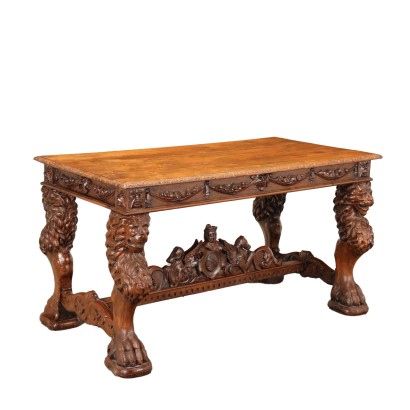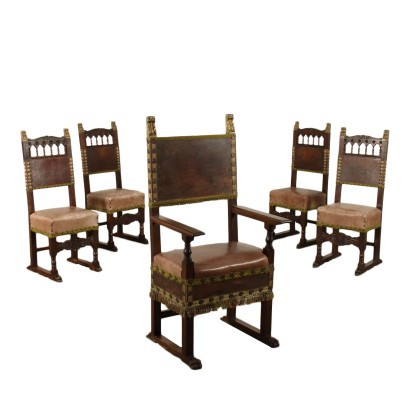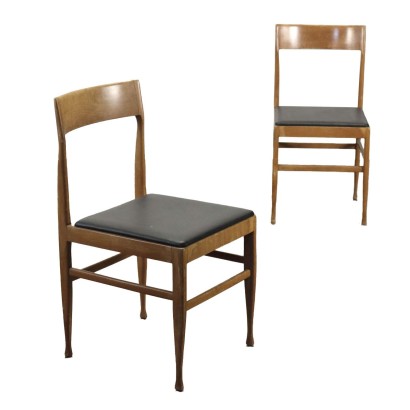Neo-Renaissance Table Beech Italy XIX Century - Italy Late 19th century
Features
Italy Late 19th century
Style: Neo-Renaissance (1820-1890)
Age: 19th Century / 1801 - 1900
Origin: Italy
Main essence: Beech
Material: Carved Wood
Description
Neo-Renaissance table in beech, Italy, late 19th century. Top with carved molding and band, the latter with masks and festoons of fruit, leonine uprights connected by a pair of crosspieces with leafy scrolls and by a large carved crossbar with central emblem within a pair of mirrored winged horses.
Product Condition:
Product that due to age and wear may require restoration and resumption of polishing.
Dimensions (cm):
Height: 81
Width: 150
Depth: 88
Additional Information
Style: Neo-Renaissance (1820-1890)
Nineteenth-century recovery and re-evaluation of forms and styles typical of the Renaissance.Find out more with the insights of our blog:
Classic Monday: a neo-Renaissance sideboard in dialogue with the past
The dictionary of antiques - Savonarola

























